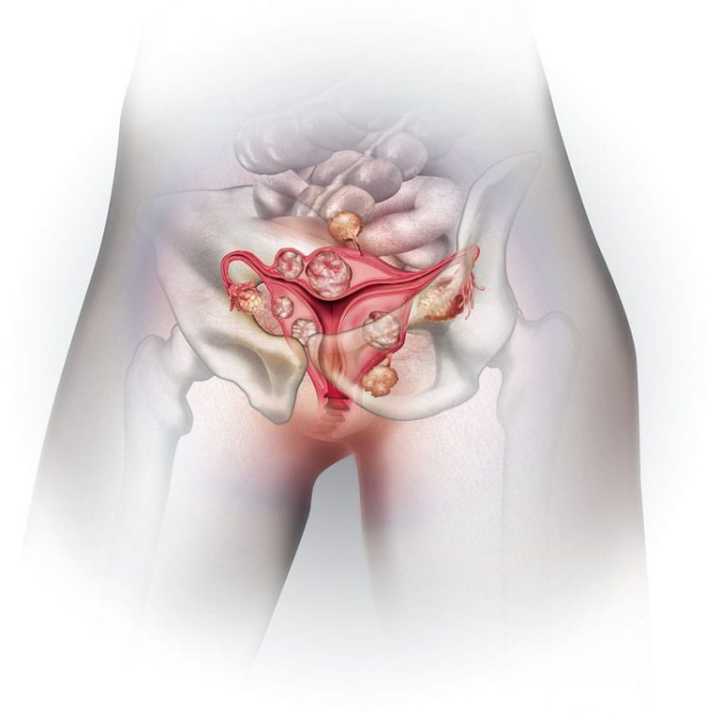All You Need To Know About Fibroids As A Woman Without Medical Jargons

We will be embarking on an enlightening journey on a condition that profoundly impacts a significant demographic, mostly women: fibroids. Before you consider scrolling past, we urge you to stay with us! We understand that navigating discussions about health can be an intimidating and perplexing endeavor. However, our mission is to transform this potentially overwhelming topic into one that is accessible and comprehensible. Within the confines of this article, we aim to furnish you with a comprehensive understanding of fibroids from their fundamental nature to the difficulties of diagnosis and treatment.
Our commitment is to break down the complexities of medical terminology, ensuring it is presented in a lucid and understandable manner. Whether you find yourself newly acquainted with a fibroid diagnosis or are simply intrigued by this condition, rest assured, we're here to provide you with guidance and knowledge. So, without further ado, let's embark on this enlighten journey!
What Are Fibroids?
Fibroids, non-cancerous growths, manifest within the uterus. They exhibit a diverse range in size, from as small as a pea to as large as a grapefruit, and may appear singularly or in multiples. While most fibroids remain asymptomatic, some can lead to substantial bleeding, discomfort, and other untoward effects.
Exploring the Causes of Fibroids
The precise etiology of fibroids remains elusive. However, research postulates a potential connection to hormonal imbalances. Specifically, an excess of estrogen and progesterone in the body is thought to be linked to fibroid development. Additionally, genetic factors may contribute to their occurrence, as fibroids exhibit a familial predisposition.
How To Recognize Fibroid Symptoms

As previously mentioned, the majority of fibroids remain hidden. Nevertheless, when symptoms do manifest, they can contain:
- Heavy menstrual bleeding
- Painful menstruation
- Pelvic discomfort
- Increased frequency of urination
- Constipation
- Lower back pain
- Discomfort during sexual intercourse
READ ALSO » Top 10 Super Rich Foods You Should Be Eating As A Woman
Should you experience any of these symptoms, it is imperative to seek medical attention promptly for an accurate diagnosis.
How Are Fibroids Diagnosed?
Typically, fibroids are identified through ultrasound examinations or other imaging modalities. A pelvic examination may also be conducted to assess any anomalous growth. In certain instances, supplemental assessments, such as MRI scans or hysteroscopy, may be warranted for a more precise diagnosis.
Treatment Options for Fibroids
Upon receiving a confirmed diagnosis, your healthcare provider will collaborate with you to determine the most effective course of action. The choice of treatment hinges on factors such as the size and location of your fibroids. Here are the diverse treatments available:
1. Medication: Hormonal medications, including birth control pills, progesterone, and GnRH agonists, prove instrumental in reducing the size of fibroids and alleviating associated symptoms.
2. Non-invasive Procedures: Cutting-edge techniques such as uterine artery embolization (UAE) and magnetic resonance-guided focused ultrasound surgery (MRgFUS) offer non-surgical means to shrink fibroids, sparing individuals from the need for invasive procedures.
3. Surgery: In cases where fibroids are notably large or produce severe symptoms, surgical intervention may be advised. This can take the form of a myomectomy, a procedure solely focused on removing the fibroids while preserving the integrity of the uterus. Alternatively, a hysterectomy may be recommended, entailing the complete removal of the uterus.
These treatment options provide a spectrum of approaches, allowing for personalized care that best aligns with individual circumstances. It's crucial to engage in open discussions with your healthcare provider to determine the most suitable path towards optimal health and well-being.

Lifestyle Modifications to Manage Fibroid Symptoms
READ ALSO » 8 Vitamins & Minerals You Need For A Healthy Immune System
In the pursuit of managing fibroid symptoms, integrating lifestyle adjustments alongside medical treatment can significantly enhance well-being. Here are key practices to consider:
1. Nourish with a Balanced Diet: Prioritize a nutritionally rich diet abundant in fruits, vegetables, and whole grains. These elements not only promote overall health but also contribute to mitigating fibroid-related discomfort.
2. Embrace Regular Exercise: Engaging in consistent physical activity plays a pivotal role in symptom management. Exercise fosters optimal circulation, supports hormonal balance, and aids in overall resilience, contributing to a more balanced well-being.
3. Cultivate Stress Management Techniques: Implement practices like yoga, meditation, or deep breathing exercises to effectively manage stress levels. These techniques not only promote relaxation but also assist in regulating hormonal fluctuations, potentially alleviating fibroid-related symptoms.
By integrating these practices into your daily routine, you're proactively taking charge of your health and well-being, empowering yourself on the path to enhanced quality of life despite fibroid challenges. Remember, consulting with your healthcare provider remains crucial to ensure a holistic and tailored approach to fibroid management.
In conclusion, while fibroids can be a source of discomfort and concern, they can be effectively managed with the appropriate diagnosis and treatment. If you're encountering symptoms or harboring concerns about fibroids, it is crucial to engage in a dialogue with your healthcare provider. Together with you, a tailored treatment plan can be formulated to enhance your quality of life.
